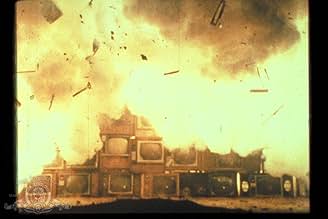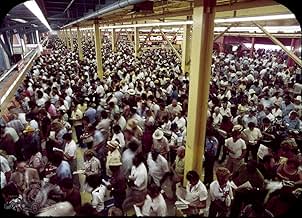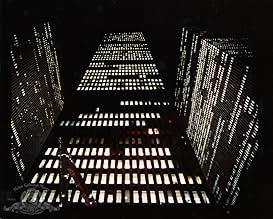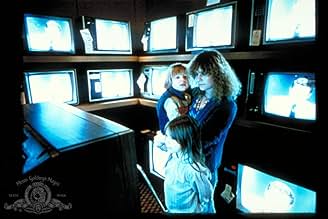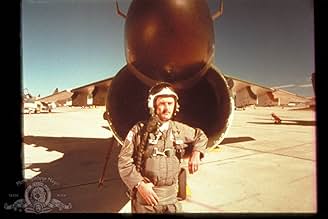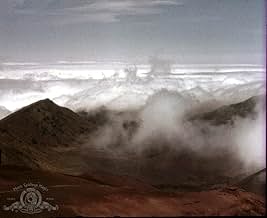Une collection de phénomènes habilement photographiés sans intrigue conventionnelle. Le film se concentre sur la nature, l'humanité et la relation entre les deux.Une collection de phénomènes habilement photographiés sans intrigue conventionnelle. Le film se concentre sur la nature, l'humanité et la relation entre les deux.Une collection de phénomènes habilement photographiés sans intrigue conventionnelle. Le film se concentre sur la nature, l'humanité et la relation entre les deux.
- Réalisation
- Scénario
- Casting principal
- Récompenses
- 6 victoires et 1 nomination au total
- Self - On TV
- (images d'archives)
- (non crédité)
- Self
- (images d'archives)
- (non crédité)
- Self - On TV
- (images d'archives)
- (non crédité)
- Self - On TV
- (images d'archives)
- (non crédité)
- Self - On TV
- (images d'archives)
- (non crédité)
- Self - On TV
- (images d'archives)
- (non crédité)
- Self - On TV
- (images d'archives)
- (non crédité)
- Self - On TV
- (images d'archives)
- (non crédité)
- Self - On TV
- (images d'archives)
- (non crédité)
- Self - On TV
- (images d'archives)
- (non crédité)
- Self - On TV
- (images d'archives)
- (non crédité)
- Self - On TV
- (images d'archives)
- (non crédité)
- Self - On TV
- (images d'archives)
- (non crédité)
- Self - On TV
- (images d'archives)
- (non crédité)
- Self - On TV
- (images d'archives)
- (non crédité)
Avis à la une
An hour & a half later, I was - and I'm having to try very hard to find adjectives here - in fact I'm failing. It was The-Thing-That-You-Can't-Even-Tell-Someone-What-It-Is. Completely transfixed, transported, for 90 minutes of my life.
This film has no dialogue. It has no actors, apart from everyone & everything that Ron Fricke's camera touches. It has no plot, apart from just the simple, complex, unfolding story of the world.
The truth is, of all the films that people feel have really made an impact on their lives - and you only need to read through this lengthy thread to see how many of those people there are - this is one of the hardest to communicate to someone who hasn't actually seen it. You can compare it, perhaps, to things they might have seen - but there aren't that many to compare to. It has a kind of poetry on a whole different level from, for example, Man with a Movie Camera. The only things that spring to mind for me are Orphee or Last Year at Marienbad, but these are completely different kinds of movie, and even people who don't like them might be totally taken apart by Koyaanisqatsi.
Sure you could - rightly - use phrases like "breathtaking cinematography" or "unforgettable images". You could praise the music (which really opened my ears to Philip Glass). You could point out, as many have done, how the film made you look again at the world, & at your own place in it. Or you could try to relay its "environmental" message - and there are people, especially those who take any implied criticism of our species' waste and cruelty as a kind of personal insult, who will not like that message.
But none of these things would come close to capturing what makes this film so special. Like trying to explain "red" to someone who's never seen colours. You have to experience it. If possible in a cinema, sitting right down at the front, completely immersed in the screen and its images.
I know I'll never forget the first time I saw it. You might not either.
When this visual opera of the senses was released, somehow I managed to miss it for all these years. Only now, have I been able to get a DVD and feast myself to one of the most mesmerizing documentaries I've seen. Now I can get to see the sequels...
In the twenty-five years since its release, nothing much has fundamentally changed. The only real difference is that the scale of life out of balance has ballooned to the point where humanity has finally realized perhaps too late that we are indeed on the path to self-destruction unless radical steps are taken to change our ways. Some might argue that I'm too pessimistic and point to the Montreal protocol (it set the wheels in motion to stop using CFCs that were causing the depletion of the earth's ozone layer) as proof that we can pull together when danger is imminent.
Perhaps true...but the problem is that many still don't think that life on earth not in the upper atmosphere is truly out of balance. This documentary takes us all back to what it was like all those years ago and, as you will see or have seen on your TV news programs today, it's now all that much worse...
The metaphors abound, beginning with Earth, Air and Water as the three dominant and necessary conditions that permit life on this planet, then relentlessly but gradually, showing how humanity changes the very conditions that support balanced life. Mountains explode, fires consume, people increase and multiply together with the trappings humanity needs to keep consuming: traffic jams, food and automobile production, steel and glass monuments to Mammon surely a parody of Kubrick's images of the monolithic Sentinel in 2001: A Space Odyssey (1968) freeways that look like arteries with blood coursing through veins, images from space that show glowing cities which morph into electronic circuits for computers we've become the machines we've invented and, of course, the milling millions, moving through life as though they are the walking dead, oblivious to all except the self and self-gratification.
It is at once a pretty picture and a damning one of particular note, the sequenced implosion of the abandoned Pruitt-Igoe housing complex in St Louis, designed, ironically, by the architect of the World Trade Center, Minoru Yamasaki.
The music very sensibly doesn't belabour the use of the title; it's chanted only during the opening sequence and during the finale which, in my opinion, is the most stunning tracking shot I've seen yet as the camera follows the detritus from an exploding rocket (a Russian one, I think) plunging back to earth. For the rest of it, just sit back, let the music waft over and through you as you watch your future begin.
This is a film that everybody should see at least once.
The images that are presented in the film are just beyond belief. The fantastic music score by that genius, Phillip Glass, compliments and enhances our experience. This film will live forever in spite of some of the comments submitted to this forum, because it deals with universal themes that will stay with us on this planet while human life will exist. This was pioneer movie making that later on became main stream. The originality being in the way the director presents the different sections in the film with some unusual photography that, while imitated, remains the standard for comparison with any new so called latest technique and innovation.
Kudos to Mr. Reggio, Mr. Glass and the people behind this gorgeous film.
Filmed between 1977 and 1982, Reggio's film was noticed by directing great Francis Ford Coppola who eventually agreed to finance the project and give it chances for distribution. Minimalist composer Philip Glass was optioned to compose the score, and the result was, quite simply, astounding.
Koyaanisqatsi is a collection of familiar images presented through tinted lenses (figuratively speaking). The experimental nature of the project can be seen in the reduced and augmented speeds of images, the use of carefully manipulated edits, and the use of Glass's score to create ambience. There are times when the film exhibits an almost surreal quality more indicative of a twisted, futuristic, dystopian sci-fi epic than of our mundane world.
This is, however, what makes Koyaanisqatsi so successful. In presenting our world in a disquieting, unflattering light, the film forces us to ruminate on our place in the universe and the consequences of many of our actions. The film starts with serene, austere images of mountains, oceans, and forests, and the repetitiveness of Glass's score does not bore us nor call attention to itself, but simply washes over us, entrancing us and instilling a sense of tranquility.
It is not long before the untainted images are replaced by nuclear power plants, highways, skyscrapers, rubble, fire and ash, and hoards of ant-like beings (humans, of course) scurrying through modern urbanity. Most times, humans are filmed at low-frame settings (making for faster speeds), and as a result, they seem frenzied, compulsively making their way through the cities in a manner that seems more conditioned than voluntary.
Glass's score responds by heightening its tension and adding a semi-brutal nature to its repetitiveness. It is somewhat aversive, but at the same time exhibits a humorous and mocking quality. By cramming together so many images of humans behaving more like lab rats than higher, thinking beings and increasing the satirical nature of the score, the film invites us to consider just how depersonalized, mechanized, and out-of-control many aspects of our life are.
The conclusion of the film contrasts against the blackly comic nature of the previous section by instilling a sense of mourning and warning. As such, there is undoubtedly a political and environmental component inherent in this film, but this is the aspect that is, in my mind, most often misunderstood. Many critics (mostly detractors) have interpreted Koyaanisqatsi as a call to action, an invective that demands that we atone for the rape-like pillaging the human race has thrusted upon the natural environment. Following from this, these critics claim that the film's message is that we would enjoy the planet more if we were not here at all, thus presenting a contradiction, since we would not be here to enjoy it.
In my own personal view, the flaw here resides in viewing the film as a tirade and a call to action. I find Koyaanisqatsi very clearly to be not a cry for reform, but a demand for awareness and meditation. There is an inevitability in the actions of human beings and their disregard for the care of their surroundings, and the wonderful thing about this film is that it forces you to experience the consequences and at least take notice of what each of us is contributing. It does not let you get away with indifference and nonchalance.
For me, however, the political component is less important than the stylistic component, which is one near and dear to my heart: the use of music to enhance the forcefulness of images. I acknowledge the fact that some will not be able to stand the repetitiveness of Philip Glass's score (and it is very repetitive at some points). But if one can consider the motive behind the repetition, the music ceases to be oppressive and becomes sublime and entrancing. The score adds impact to an already stunning array of unforgettable images, the details of which I will not go into, so that one may see the film with fresh eyes.
I saw Koyaanisqatsi for the first time at a performance in which the visuals were projected onto a giant screen with the soundtrack being supplied by Glass and his ensemble, who had come for a live performance. I had barely made it in time, since I struggled to find a parking space and was drenched from running in the rain. The moment the film started, however, all of the accumulated tensions in my body completely dissipated. It was not at all a cerebral experience, but an instinctive one in which I enjoyed the images and sounds for their own sakes.
When I left the performance, I was in a hypnotic daze, transfixed by what I had just seen. My initial impressions haven't changed to this day. I loved this film, and while the political and environmental concerns it addresses are important, what really makes this film for me is the instinctive, visceral power of its images and sounds. Koyaanisqatsi maroons its audience in an alternate version of reality that sheds disturbing light on our lives, and yet at the same time, it produces an unforgettable cinematic experience that is pervasively engrossing.
Le saviez-vous
- AnecdotesGodfrey Reggio was hooked on Philip Glass doing the music. He approached Glass through a mutual friend, and Glass replied, "I don't do film music." Reggio persisted, and finally the friend told Glass that the tenacious guy was not going to go away without at least an audience. Glass relented, though he still insisted he wasn't doing the music. Reggio put together a photo montage with Glass' music as the soundtrack, which he presented to Glass at a private screening in New York. Immediately following the screening, Glass agreed to score the film.
- GaffesThe two explosions at about 18 minutes into the film were shot with anamorphic lenses and not properly desqueezed for the film's 1.85:1 aspect ratio.
- Citations
[last lines]
title card: Translation of the Hopi Prophecies sung in the film: "If we dig precious things from the land, we will invite disaster." - "Near the Day of Purification, there will be cobwebs spun back and forth in the sky." - "A container of ashes might one day be thrown from the sky, which could burn the land and boil the oceans."
- Crédits fousEnd credits go over mashed voice recordings in English ranging from call operator answers to television news.
- ConnexionsEdited into Wide Awake (2006)
Meilleurs choix
Détails
- Date de sortie
- Pays d’origine
- Site officiel
- Langues
- Aussi connu sous le nom de
- Koyaanisqatsi
- Lieux de tournage
- San Onofre Nuclear Generating Station, San Diego County, Californie, États-Unis(as seen from San Onofre State Beach)
- Sociétés de production
- Voir plus de crédits d'entreprise sur IMDbPro
Box-office
- Montant brut aux États-Unis et au Canada
- 1 723 872 $US
- Montant brut mondial
- 1 728 699 $US


